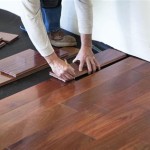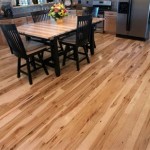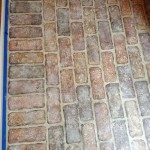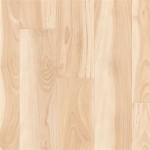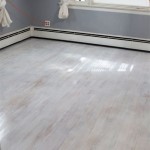Laminate floor transition strips are a popular choice for many homeowners when looking to upgrade their flooring. Transition strips are used to bridge the gap between two different types of flooring, hiding the seam and providing a smooth transition between the two. These strips come in a variety of materials, colors, and styles, offering a variety of options to suit any décor. Understanding the different types of laminate floor transition strips and how to install them correctly can help ensure your floors look great for years to come.
Types of Laminate Floor Transition Strips
Laminate floor transition strips come in a variety of materials, styles, and colors, offering the homeowner a wide range of options to choose from. The most common types are made of vinyl, aluminum, and wood. Vinyl strips are the most economical, while aluminum and wood strips provide a more traditional look. Additionally, there are specialty transition strips, such as those designed to help with sound insulation or to provide a smooth transition between two different heights of flooring.
Installation of Laminate Floor Transition Strips
Installing laminate floor transition strips is relatively simple and can be done with a few basic tools. The first step is to measure the gap between the two floors and cut the transition strip to the correct length. Once the strip has been cut, it should be placed in the gap and secured with screws, nails, or adhesive. Once the strip has been secured, the edges should be sealed with a sealant to prevent moisture from seeping in between the floors.
Advantages of Laminate Floor Transition Strips
Laminate floor transition strips offer several advantages, including:
- Provide a smooth transition between two different types of flooring
- Eliminate the need for additional carpeting or rugs to cover the seam
- Come in a variety of materials, styles, and colors to suit any décor
- Easy to install with basic tools
- Help with sound insulation
Caring for Laminate Floor Transition Strips
Caring for laminate floor transition strips is relatively easy. A damp cloth can be used to clean the strips, and they should be sealed periodically to protect them from moisture. Additionally, the edges of the strips should be inspected regularly for signs of wear or damage, and any damage should be repaired immediately.
Conclusion
Laminate floor transition strips are an easy and cost-effective way to bridge the gap between two different types of flooring, creating a seamless transition between the two. With a variety of materials, styles, and colors, there are plenty of options to suit any décor. Understanding the different types of laminate floor transition strips and how to install them correctly can help ensure your floors look great for years to come.
:max_bytes(150000):strip_icc()/guide-to-basic-floor-transition-strips-1821708_02_4in1_3222-6a588d0ec9f14ff7b8181f3dbda5e947.jpg)







:max_bytes(150000):strip_icc()/guide-to-basic-floor-transition-strips-1821708_04_tile_laminate_3218-108f30e37c3d4a4884c318312dd878ad.jpg)






Related Posts

